I used this OP97 op-amp to make a simple unity-gain feedback circuit. I would expect the output in this case to follow the input with very little error, however the output is actually measured at \$ 2.7 \text{ V}\$ rather than \$ \approx 3.1 \text{ V}\$ as expected.
This seems like a fairly large error for this buffer. I checked the data sheet and it appears that I'm operating the device well-within the allowable supply range, so I'm not sure what the error may be.

simulate this circuit – Schematic created using CircuitLab
